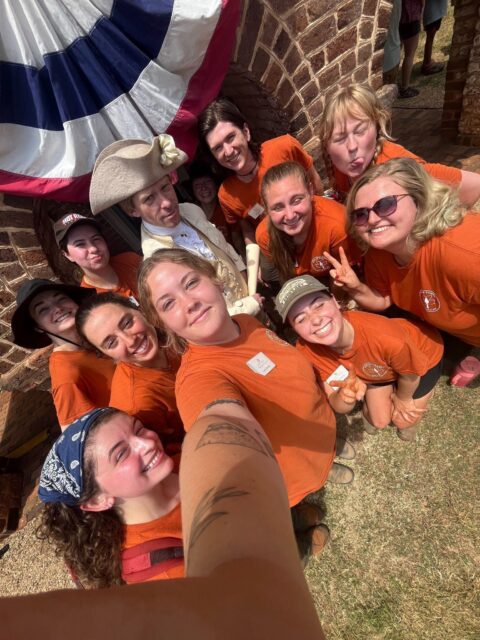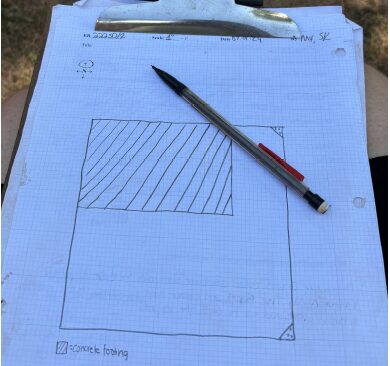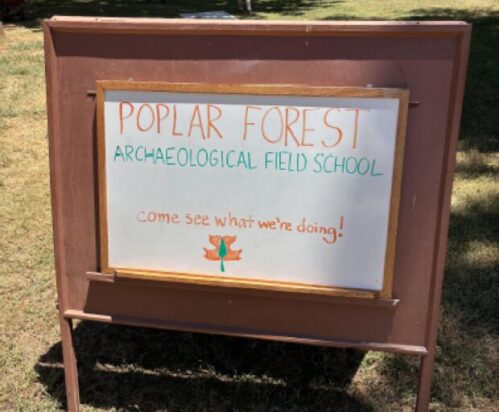Archaeology Blog
2024 Field School Week 5
By: Molly Young and Sarah Karhan
This week was centered on public archaeology, with everyone eagerly anticipating the Fourth of July on Thursday. Starting on Monday, we began the day within our unit. The temperature outside was breezy and in the high eighties, a relief from last week’s recent heatwave! Fieldwork consisted mainly of mapping our unit’s features and flattening out the layer we were working in before heading inside to learn about GIS (Geographic Information Systems) presented by Dr. Steve Lenik and Jon Mayes. John also provided impressive LiDAR images of Poplar Forest, highlighting features all across the site.
Proceeding into Tuesday, the first lab group began with an ethics bowl of sorts regarding correct and incorrect curation practices. Later in the field, we continued taking down our layer and closing it before heading inside for Erin Schwartz’s lecture on industrial archaeology, industrial slavery, and public archaeology. We discussed sites such as the Hopewell Furnace in Pennsylvania and Catoctin Furnace in Maryland. Deconstructing perspectives of enslaved life from solely agricultural plantation-style labor helps reconstruct a more accurate picture of the entirety of American slavery. Wednesday began and ended with fieldwork in preparation for the Fourth of July. Our units were paused in efforts to complete others and open new units. Because of this, our lecture was moved to Friday, and we headed home after closing up our units.
Here at Poplar Forest, we are far from short of artifacts. Our main findings this week have been nails—wrought nails, cut nails, wire nails—this unit came with them all. In addition to nailing our findings, we have had an increase in vessel glass found all around our unit. Although no two colors have been the same, sporting colors such as green or amber. Molly also found pieces of ceramic with a maker’s mark on it!
On the Fourth of July, we were visited by many people who came out to Poplar Forest. On this hot July day, we moved units to one that bordered the 1857 Slave Dwelling. Originally, the HVAC system for the home sat atop our unit. But once the system had been removed, we were free to begin removing all the gravel. Inside our unit was modern sewage piping, along with several bricks. We had plenty of families coming up to us to talk, wishing to learn all about the archaeological work we were doing. In between digging, we visited the petting zoo, grabbed some shaved ice, and snapped a quick selfie with Thomas Jefferson himself! All in all, it was an exciting and educational experience for all involved and a reminder to the public of the importance of preserving history.


